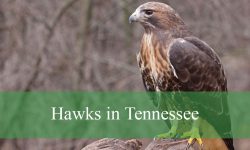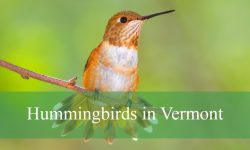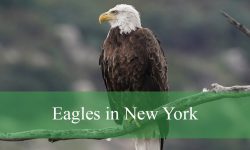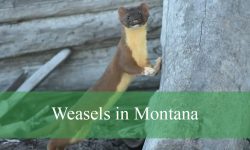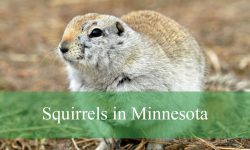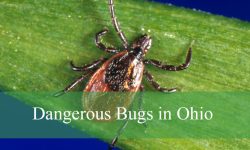Brown birds in North Carolina are often easy to miss because of their subtle colors, but they are full of interesting traits and behaviors. These birds live in many different habitats, including forests, wetlands, and even urban areas across the state.
Many brown birds have distinctive songs or markings that help with identification. Some species, like the Brown Thrasher, are common residents, while others only visit during migration seasons. Learning about their habits makes watching them much more exciting.
In this article, you will find information on 18 brown birds in North Carolina, along with photos and tips to help identify each one. This guide will make it simple to recognize these birds and appreciate their role in nature.
Common Brown Birds Found in North Carolina
Carolina Wren

The Carolina Wren is a small, energetic bird with a compact, round body and a long, slightly curved bill. Its warm reddish-brown upperparts contrast with a buffy underbelly, and a bold white stripe runs above each eye, making it easy to recognize. Its short wings and tail show subtle barring when viewed closely.
This bird is known for its loud, whistling song, which rings out through forests and neighborhoods throughout the year. Males sing persistently—even in winter—often repeating phrases like “teakettle-teakettle-teakettle.” Despite its small size, it’s surprisingly vocal and territorial.
In North Carolina, the Carolina Wren is commonly found in wooded suburbs, shrubby forests, and overgrown backyards. It often nests in cavities, flowerpots, or even mailboxes. These wrens forage close to the ground, flipping leaves to find insects, spiders, and other small invertebrates.
Song Sparrow
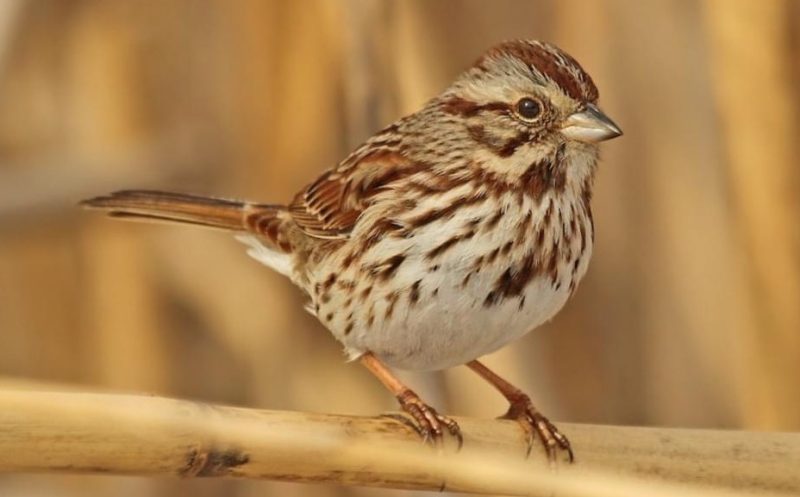
The Song Sparrow is a medium-sized, streaky brown bird with a rounded head, short bill, and long, rounded tail. Its underparts are white with thick brown streaks that often merge into a central dark spot on the chest. The face usually shows gray and brown tones with a noticeable eye line.
This sparrow is best known for its sweet, varied song, a combination of trills and clear notes. Males sing from shrubs or fence posts to establish territory and attract mates, especially in spring and early summer. Its vocal range is wide and can vary from one region to another.
Across North Carolina, Song Sparrows inhabit open fields, brushy edges, wetlands, and backyard gardens. They feed on seeds, insects, and berries, often hopping along the ground or low in shrubs. They’re especially abundant in fall and winter when flocks may forage together.
Brown Thrasher
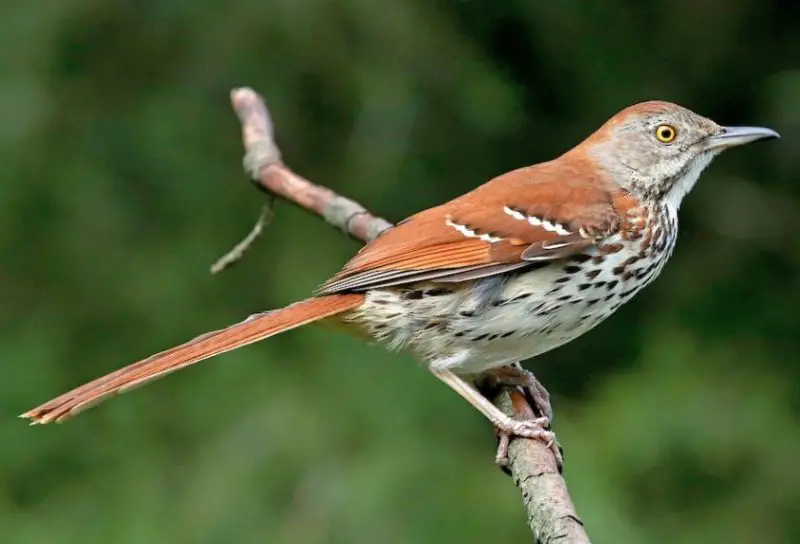
The Brown Thrasher is a slender, medium-sized bird with rich rufous-brown upperparts and a pale underbelly marked with bold, dark streaks. Its long tail is slightly curved, and its face features striking yellow eyes and a curved bill. This bird often flicks its tail and moves with a deliberate, searching motion.
Famed for its mimicry, the Brown Thrasher sings long, complex songs made up of repeated phrases, often mimicking other birds. Males can have a repertoire of over 1,000 song variations. They sing from dense shrubs or treetops, especially during spring.
In North Carolina, Brown Thrashers prefer thick underbrush, hedgerows, woodland edges, and overgrown lots. They forage on the ground by sweeping aside leaf litter with their bills to uncover insects, seeds, and berries. Though shy and reclusive, they are fairly widespread across the state.
Eastern Towhee
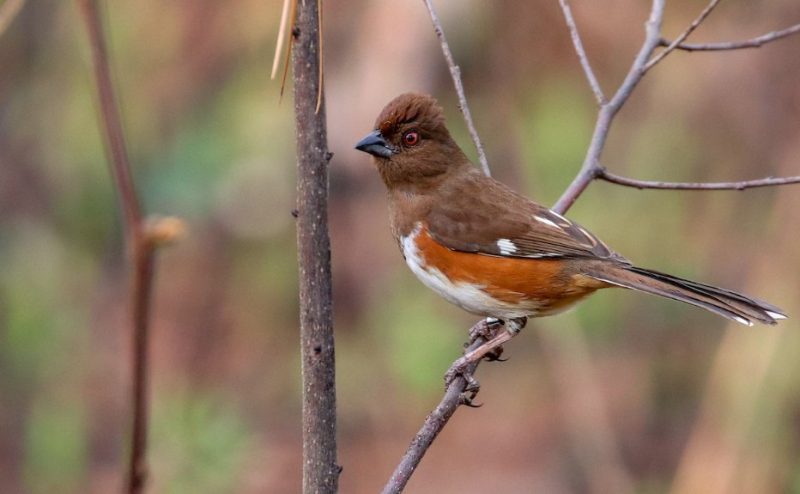
The Eastern Towhee is a striking ground-dwelling sparrow with a bold pattern. Males have a black head, back, and tail with rich reddish-brown sides and a white belly, while females show brown instead of black. Both sexes have red eyes and long tails with white corners.
Their call, a sharp “chewink,” and their distinctive song—often described as “drink-your-tea”—help birders locate them in the brush. These birds are ground foragers, using a two-footed backward scratch to uncover food hidden under leaves and debris.
Eastern Towhees are found across North Carolina in dense woodlands, thickets, and forest edges. They favor habitats with plenty of leaf litter and undergrowth. Their diet consists of insects, seeds, and fruit. During winter, they often visit feeders, especially if millet is available.
House Wren
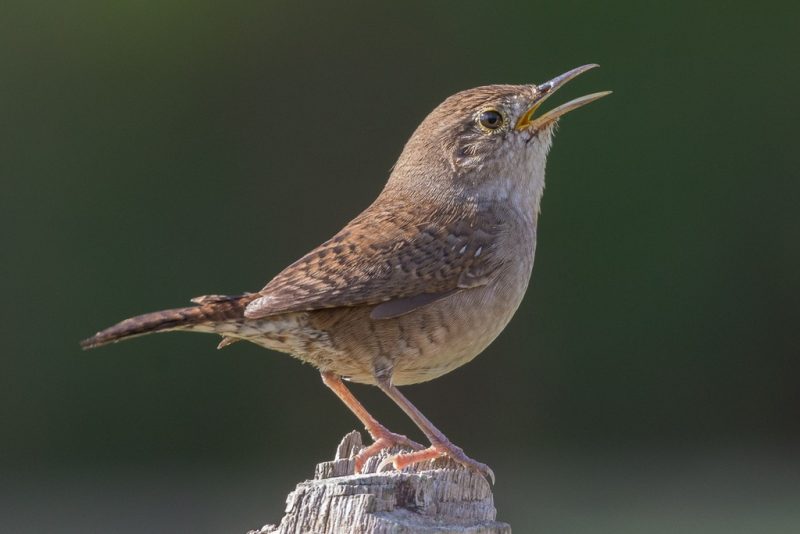
The House Wren is a tiny, active bird with plain brown plumage, lighter underparts, and faint barring on the wings and tail. It has a short tail often held upright and a thin, slightly curved bill. Despite its plain appearance, it has a bright personality and a loud, bubbling song.
This species is highly adaptable and thrives in human-altered environments. Males sing vigorously during the breeding season, and both sexes inspect potential nest sites. They often use nest boxes, tree cavities, or even crevices in buildings.
In North Carolina, House Wrens are common during the warmer months, especially from April to September. They are found in yards, gardens, parks, and forest edges. Their diet includes spiders, beetles, caterpillars, and other small insects, which they glean from foliage and tree bark.
Northern Flicker (Brown Morph)
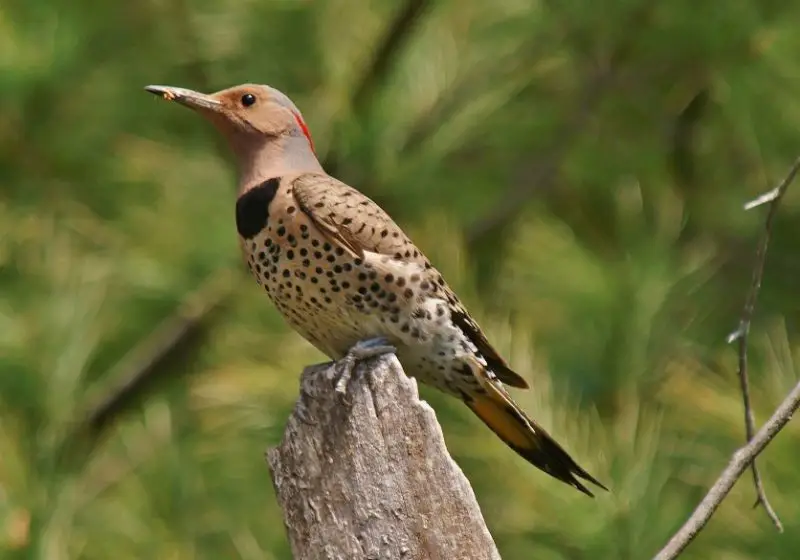
The Northern Flicker, particularly the “yellow-shafted” variety common in North Carolina, is a large woodpecker that often appears light brown overall. It has black bars on its back, a spotted belly, and a distinct black crescent across the upper chest. In flight, you can easily spot the bright white rump and yellow underwings.
Although a member of the woodpecker family, Northern Flickers spend more time on the ground than most of their relatives. They forage by probing the soil with their long bills, primarily feeding on ants and beetles. Their call is a loud, repeated “wick-a-wick-a-wick” sound that carries through open woods and neighborhoods.
In North Carolina, they are found in a variety of open habitats including forest edges, suburban yards, and even golf courses. They often nest in tree cavities and may return to the same spot year after year. During fall and winter, their numbers increase with northern migrants joining local residents.
Field Sparrow
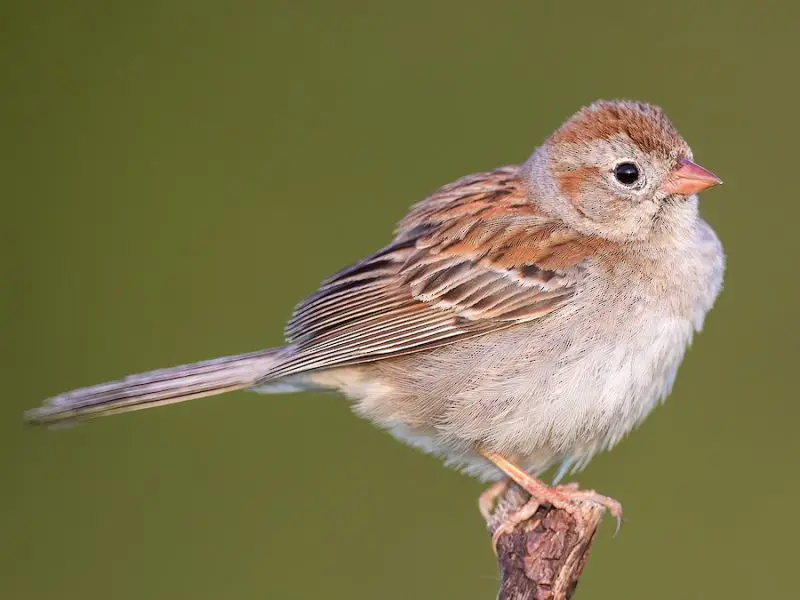
The Field Sparrow is a small, slender bird with a clean, buffy breast, pale gray face, and a distinctive rufous cap. Its pinkish bill and unmarked underparts help differentiate it from other sparrows. The overall appearance is soft and warm-toned, making it easy to overlook in grassy environments.
Its song is a sweet, accelerating trill that sounds like a bouncing ball coming to a stop. Males often sing from low shrubs or fence posts during the breeding season. The species is generally shy, quietly foraging on the ground for seeds and small insects.
In North Carolina, Field Sparrows are most often found in overgrown fields, woodland clearings, and grassy meadows. They prefer areas with scattered bushes or small trees for perching. These birds nest on or near the ground, and their numbers may increase in fall as migrants pass through.
Brown-headed Cowbird
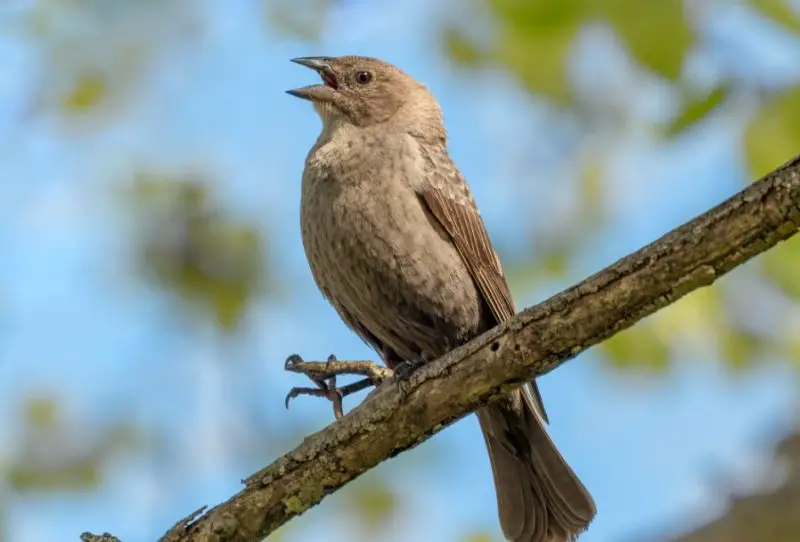
The Brown-headed Cowbird is a small, stocky blackbird known for its parasitic nesting behavior. Males are glossy black with a rich brown head, while females are uniformly plain brown with a lightly streaked belly. Their thick, pointed bill and short tail help distinguish them from similar-sized birds.
Rather than building their own nests, cowbirds lay their eggs in the nests of other species. The unsuspecting host parents often raise the cowbird chick at the expense of their own. This strategy has allowed Brown-headed Cowbirds to thrive across much of North America.
In North Carolina, these birds are commonly seen in open areas such as pastures, fields, and suburban lawns. They often forage in flocks, feeding on seeds and insects stirred up by grazing livestock or mowers. Their bubbly, gurgling song and clicking calls are heard most often in spring and early summer.
Hermit Thrush
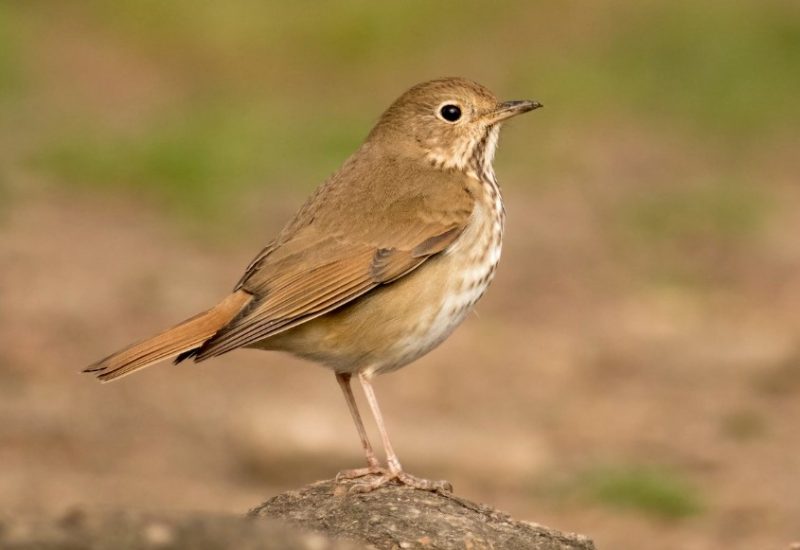
The Hermit Thrush is a medium-sized thrush with a warm brown back, contrasting reddish tail, and a spotted, pale chest. Its thin white eye-ring and upright posture give it a gentle appearance. It frequently flicks its wings and raises its tail, a behavior that helps in identification.
This bird is best known for its haunting, flute-like song, which is often described as ethereal and melancholic. However, in North Carolina, it is most often seen during winter months when it remains largely silent. It is a solitary bird, often staying low in thickets and woodland understory.
Hermit Thrushes winter across much of North Carolina in forests, wooded parks, and dense backyards. They forage quietly on the ground, eating insects, berries, and fallen fruit. Their preference for undisturbed woodland makes them easier to hear than to see during the colder months.
Swainson’s Thrush
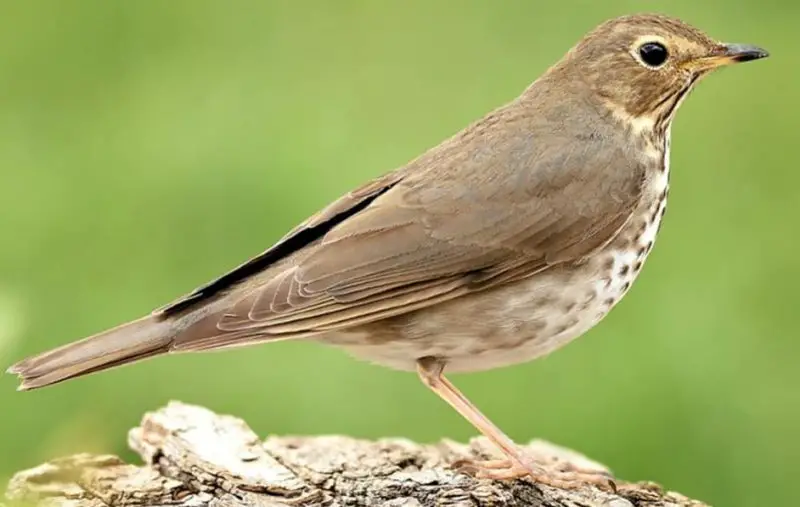
Swainson’s Thrush is a medium-sized migratory thrush with a soft brown back and buffy underparts covered in dusky spots. Its bold, buff-colored eye-rings give it a “spectacled” appearance. The overall coloration is more olive-brown compared to the reddish tones of Hermit Thrushes.
This species is mostly silent during its brief stopovers in North Carolina, but its ethereal, upward-spiraling song can sometimes be heard during early morning or evening hours in spring. Unlike Hermit Thrushes, Swainson’s Thrushes are primarily seen during migration periods rather than in winter.
In North Carolina, Swainson’s Thrushes pass through during spring and fall migration, using forested habitats to rest and feed. They forage quietly in the understory, picking up insects, spiders, and berries. Though not commonly seen for long, they are a regular and dependable migrant in the state’s woodlands.
Winter Wren

The Winter Wren is one of the smallest birds found in North Carolina, with a compact, round body and an extremely short tail often held upright. It has dark brown plumage with fine black barring on the wings, tail, and flanks, blending in well with the leaf litter and forest floor. Its pale eyebrow and thin, slightly curved bill add to its delicate features.
Despite its tiny size, the Winter Wren is known for its powerful and complex song—a high-pitched, bubbling cascade of notes that can last several seconds. However, during winter in North Carolina, it tends to remain quiet and inconspicuous. Its behavior is secretive, often seen hopping low among roots, fallen logs, and mossy stumps.
In North Carolina, this species is mainly seen during the colder months, from late fall to early spring. It prefers dense, moist forests, especially in the mountains and Piedmont region. The Winter Wren feeds on small insects, spiders, and larvae, carefully searching through decaying wood and vegetation near the forest floor.
Swamp Sparrow
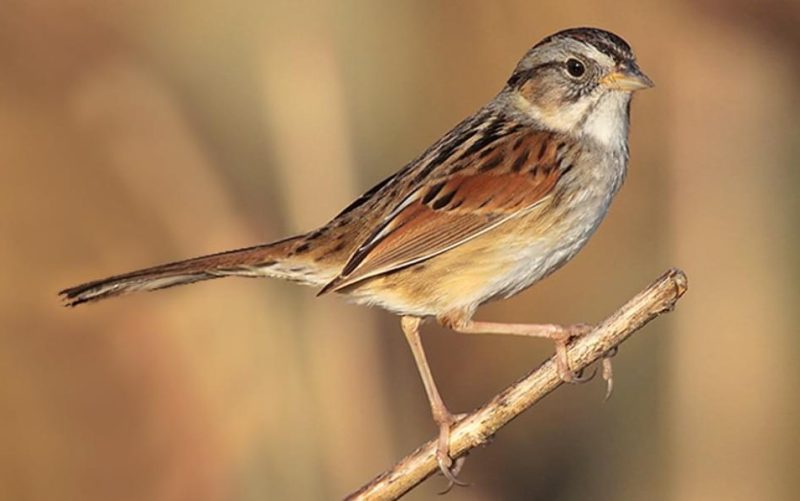
The Swamp Sparrow is a medium-sized sparrow with a rich brown back streaked with black and a grayish face and breast. Its wings have a reddish hue, and it shows a fine dark line through the eye. Unlike many other sparrows, it has a clean, unstreaked underside and a relatively long tail.
This species is typically shy and elusive, staying low in dense wetland vegetation. Its call is a sharp “chip,” and its song is a slow, trill-like series of notes that carries softly across marshes. Though it sings more actively during spring, Swamp Sparrows are present in North Carolina mainly in the winter.
They inhabit freshwater marshes, wet fields, and swampy edges throughout the state during the colder months. You’ll often find them in cattails, sedges, or shrubs near standing water, foraging for seeds and insects. Their cryptic coloring and stealthy movements make them challenging to spot unless you’re watching carefully.
Marsh Wren
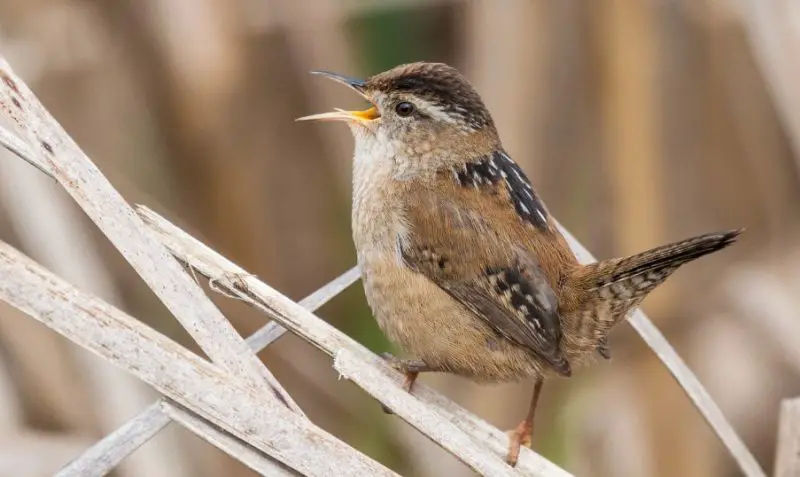
The Marsh Wren is a small, secretive bird with a warm brown body, a boldly streaked black and white back, and a bright white stripe over the eye. Its tail is often cocked upright, and it has a thin, pointed bill ideal for picking insects from reeds and grasses. It’s more colorful and vocal than many other wrens.
During the breeding season, Marsh Wrens are extremely active singers, producing a rapid, gurgling song that sounds like a busy typewriter. Males build multiple dome-shaped nests in dense vegetation to attract females. They can be quite territorial and even aggressive toward intruders in their marshy domain.
In North Carolina, Marsh Wrens are primarily found during the summer months in coastal wetlands, brackish marshes, and reedy estuaries. They prefer dense stands of cattails and bulrushes where they can hide and nest. Their diet consists mostly of insects, spiders, and other small invertebrates picked from stalks and water surfaces.
Sedge Wren
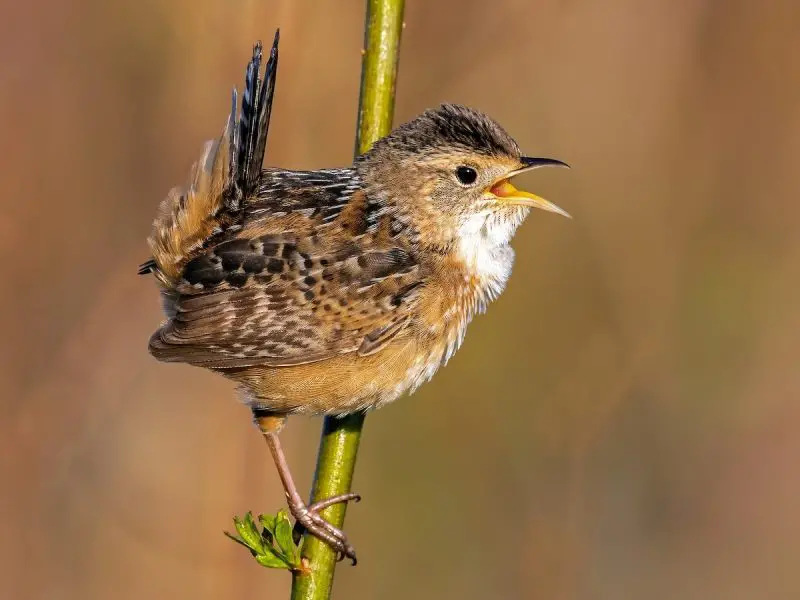
The Sedge Wren is a small, inconspicuous bird similar in appearance to the Marsh Wren but less common and more finely streaked. Its back and crown are brown with crisp white streaks, and it has a buffy chest with faint barring. Like other wrens, it often holds its short tail upright and moves with quick, darting motions.
Its song is a dry, chattering series of notes delivered in short bursts. Unlike the Marsh Wren, which is loud and assertive, the Sedge Wren sings quietly and tends to be more secretive. It often sings from low grasses, especially in early morning or late evening during the breeding season.
In North Carolina, Sedge Wrens are uncommon and usually found in moist meadows, grassy wetlands, and sedge fields, especially during migration. They prefer areas with dense, wet vegetation and tend to avoid larger open marshes. Their diet consists mostly of insects and spiders, gleaned from grass blades and stems.
Veery
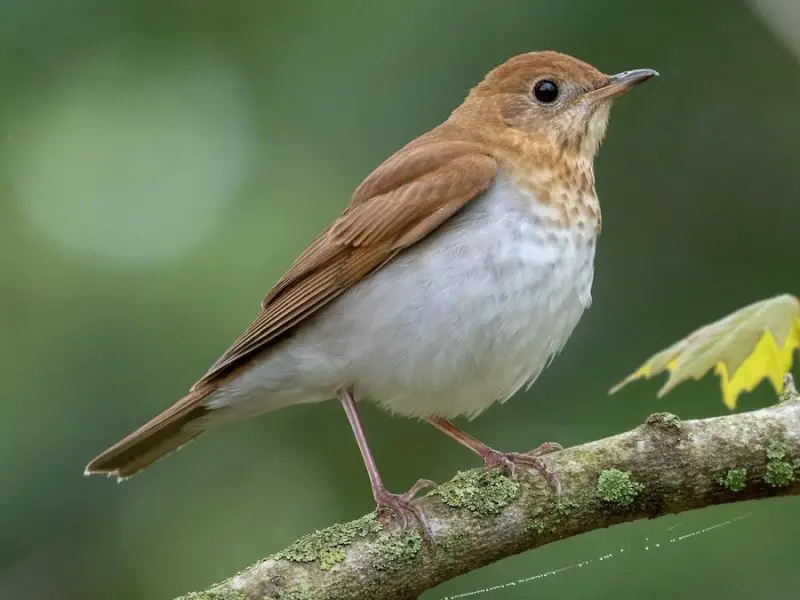
The Veery is a medium-sized thrush with a soft cinnamon-brown back, pale underparts, and faint spotting on the upper chest. Compared to other thrushes like the Hermit Thrush, the Veery’s spots are lighter and less defined, giving it a cleaner, more uniform appearance. It also has a plain face with a faint eye ring and a slightly downcurved bill.
This species is best known for its gentle, echoing song—a series of downward-spiraling, flute-like notes that seem to swirl through the forest. The song is particularly haunting during early mornings and evenings. Although not commonly heard in North Carolina, migrating males may occasionally sing briefly during stopovers.
In North Carolina, the Veery is most often seen during migration in spring and fall as it travels between South American wintering grounds and northern breeding areas. It prefers damp deciduous forests, shaded stream corridors, and brushy clearings where it forages for insects and berries close to the ground.
Wood Thrush
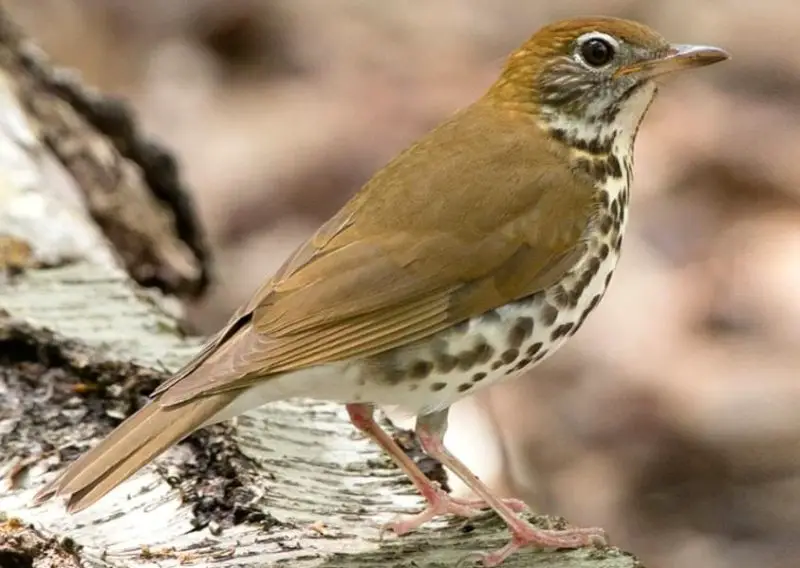
The Wood Thrush is a striking member of the thrush family, with a warm reddish-brown back, bright white underparts, and bold black spots covering the breast and flanks. Its large eyes, round body, and straight posture give it a dignified appearance. It’s larger than the Veery and Hermit Thrush and has a more robust build.
Its song is one of the most beautiful of all North American birds—rich, flute-like, and ethereal. Each phrase is a mix of whistled notes and harmonized undertones, often sung from high perches deep in the forest. Males sing persistently during the breeding season, especially in early summer.
In North Carolina, Wood Thrushes are summer residents in mature deciduous forests, especially in the Piedmont and mountain regions. They prefer areas with a dense understory and moist leaf litter, where they forage for insects, earthworms, and fruit. Unfortunately, habitat loss has led to declining populations in many areas.
Lincoln’s Sparrow
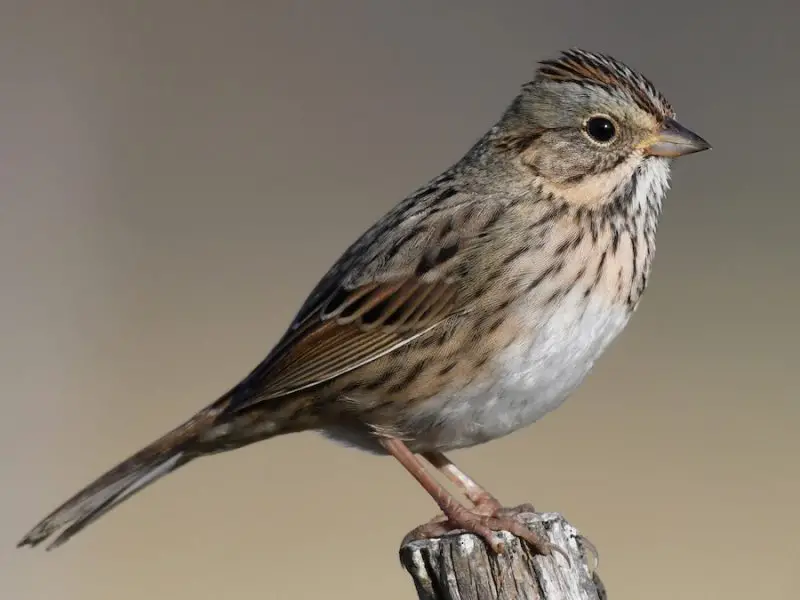
Lincoln’s Sparrow is a secretive and beautifully patterned bird with finely streaked brown and gray plumage. It has a buffy chest with neat streaks, a gray face with brown crown stripes, and a thin white eye ring. Though not flashy, its refined markings make it one of the more elegant sparrows.
This sparrow has a sweet, tinkling song, though it’s rarely heard in North Carolina since the species is mostly seen during migration. It tends to be shy and elusive, usually remaining hidden in tall grasses, shrubs, or weedy fields. When flushed, it flies low and quickly vanishes into cover.
In North Carolina, Lincoln’s Sparrow is considered an uncommon migrant, passing through primarily in spring and fall. It frequents damp, overgrown areas, weedy edges, and brush piles. Its diet consists of insects and seeds, which it collects from the ground or low vegetation.
Northern Waterthrush
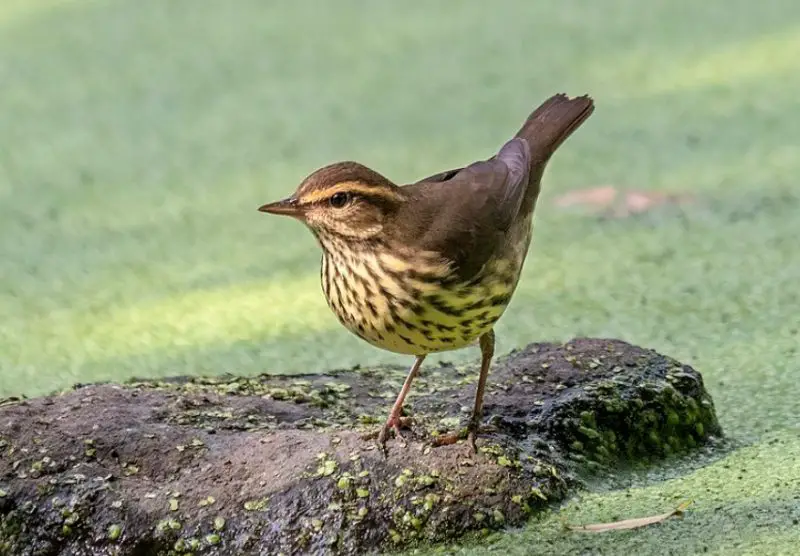
Though classified as a warbler, the Northern Waterthrush closely resembles a thrush in both shape and behavior. It has olive-brown upperparts, a pale yellowish belly with bold dark streaks, and a prominent pale eyebrow stripe. Its tail often bobs as it walks along muddy edges.
Its sharp “chink” call and energetic, choppy song are often heard during migration. The Northern Waterthrush is more often seen walking than hopping, foraging along stream banks and muddy forest floors. It constantly pumps its tail, which helps distinguish it from similar species.
In North Carolina, the Northern Waterthrush is a migrant, usually seen in spring and fall near slow-moving streams, ponds, and wet woods. It prefers shaded, wet environments where it can hunt insects, spiders, and aquatic larvae along the water’s edge. It is rarely seen far from freshwater habitats.
FAQ About Brown Birds in North Carolina
What types of brown birds are most common in North Carolina?
Some of the most common brown birds in North Carolina include the Carolina Wren, Song Sparrow, Eastern Towhee, and Brown Thrasher. These birds are frequently seen in forests, backyards, brushy areas, and wetland edges across the state. They vary in size and behavior but often blend in well with their environment due to their brown-toned plumage.
Are all brown birds sparrows or wrens?
No, not all brown birds are sparrows or wrens. While many small brown birds belong to these families, others such as the Northern Flicker (a type of woodpecker), Veery, and Northern Waterthrush (a warbler) also exhibit brown coloring. Brown plumage is common in many bird families as it provides camouflage in woodland or marshy habitats.
When is the best time to see brown birds in North Carolina?
Brown birds can be seen year-round in North Carolina, but species diversity changes with the seasons. Winter brings birds like the Hermit Thrush, Winter Wren, and Swamp Sparrow, while spring and fall migration bring in rarer species like the Veery, Lincoln’s Sparrow, and Swainson’s Thrush. Summer is ideal for spotting residents like the Carolina Wren, Wood Thrush, and Eastern Towhee.
Where should I look for brown birds in North Carolina?
Brown birds can be found in a wide range of habitats across the state. Wooded areas and forest edges host wrens, thrushes, and towhees. Wetlands, marshes, and riverbanks are good spots for species like the Marsh Wren, Northern Waterthrush, and Swamp Sparrow. Suburban backyards with dense shrubs and brush piles may attract Carolina Wrens and Song Sparrows.
How can I tell brown bird species apart?
Identification of brown birds often relies on subtle features such as eye rings, chest streaking, bill color, and song. For example, the Winter Wren is tiny with fine barring and a stubby tail, while the Brown Thrasher is larger, heavily streaked, and has bright yellow eyes. Learning their calls and behaviors also helps greatly with correct identification.
Do any brown birds in North Carolina migrate?
Yes, several brown birds in North Carolina are migrants. Species like the Veery, Swainson’s Thrush, Lincoln’s Sparrow, and Northern Waterthrush pass through during spring and fall migrations. Others, such as the Winter Wren and Hermit Thrush, spend only the winter in the state before moving north to breed.
Are brown birds important for the ecosystem?
Absolutely. Brown birds play a vital role in North Carolina’s ecosystems by controlling insect populations, dispersing seeds, and contributing to forest health. Some, like wrens and thrushes, feed on insects in leaf litter, while sparrows and towhees help control weed growth by eating seeds.
Can I attract brown birds to my yard?
Yes, you can attract brown birds by providing native shrubs, leaving brush piles, and offering food such as suet, seeds, or mealworms. Ground-feeding species like Eastern Towhees and Song Sparrows appreciate open areas with leaf litter, while Carolina Wrens may use nest boxes or sheltered nooks.

